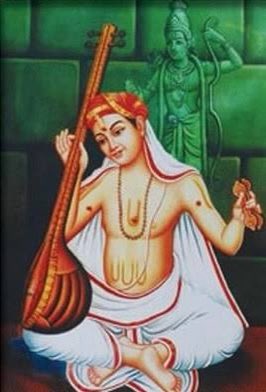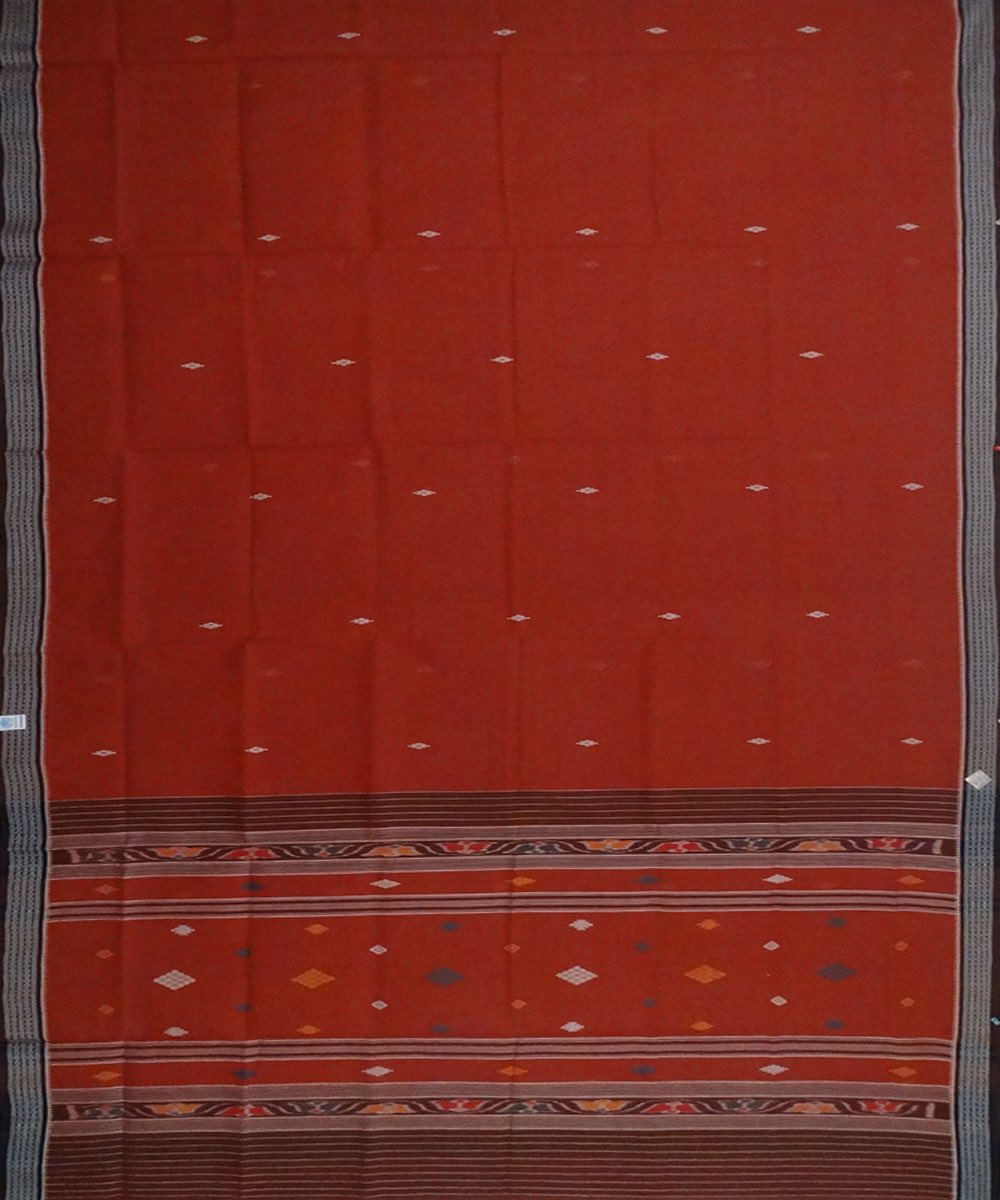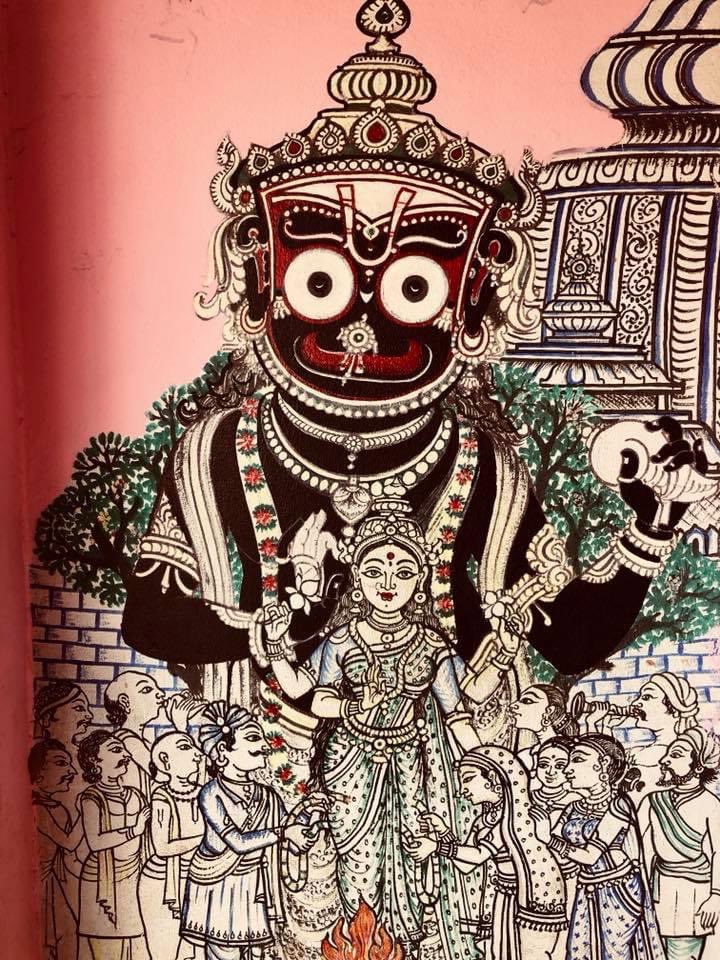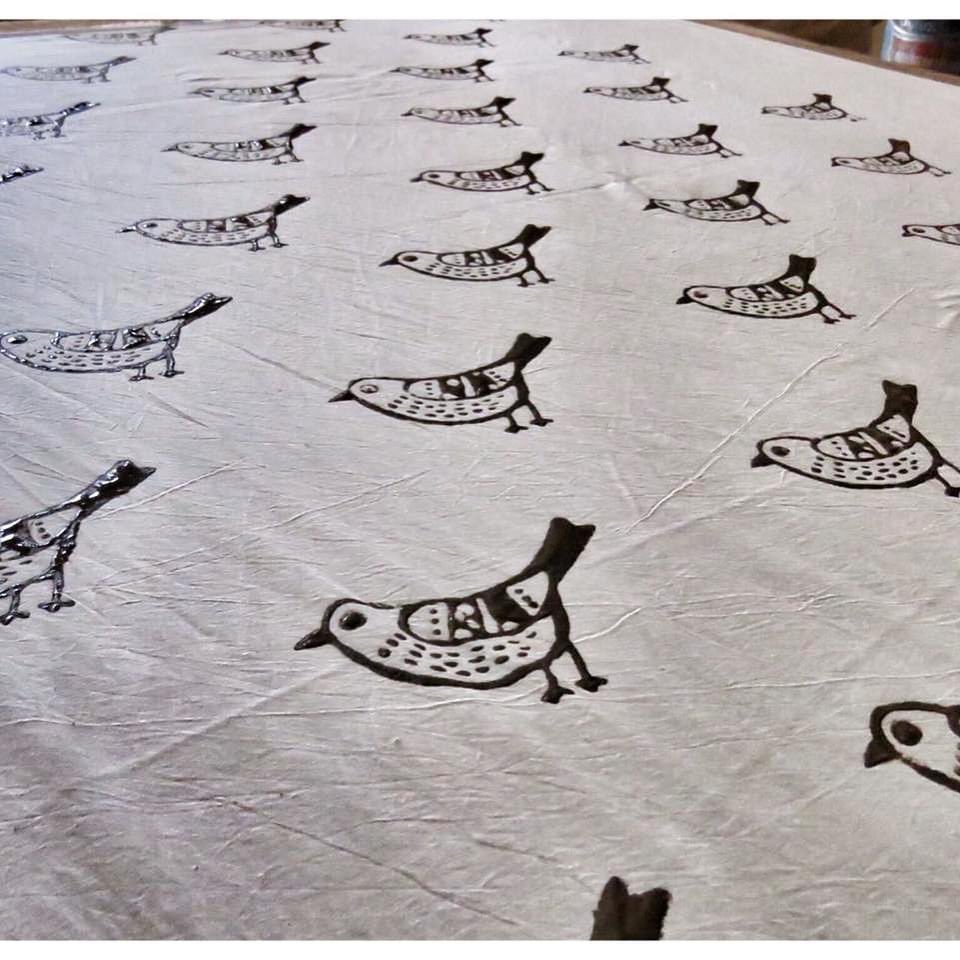
Author, Speaker. Fellow-Ananta Leadership Program, BORI-Infosys Fellow, Convenor-Indic Academy. Love Travel, Temples And Textiles. #NoBindiNoBusiness
15 subscribers
How to get URL link on X (Twitter) App


 At the 10th century CE shrine of Mukteshwar in Bhubaneshwar, Odisha, you will find them at the edge of the base moldings. Crouched under carved pilasters or projecting beams, these silent stone figures have taut muscles, every tendon etched by the chisel of time. Their faces are neither serene nor grotesque, but weary—deeply, achingly weary. You can feel the weight on their shoulders if you observe their faces.
At the 10th century CE shrine of Mukteshwar in Bhubaneshwar, Odisha, you will find them at the edge of the base moldings. Crouched under carved pilasters or projecting beams, these silent stone figures have taut muscles, every tendon etched by the chisel of time. Their faces are neither serene nor grotesque, but weary—deeply, achingly weary. You can feel the weight on their shoulders if you observe their faces.

 The so called #MonkeyWindows are not actual windows. They are exquisitely carved stone lattice panels—jalis—tucked into the sides of the temple. From afar, they look like decorative screens. But zoom in, and you’ll find mischief. Incidentally, these temples are more than a 1000 years old, remember that when some Marxist historian tells you that ‘Mughals gave us jaali’.
The so called #MonkeyWindows are not actual windows. They are exquisitely carved stone lattice panels—jalis—tucked into the sides of the temple. From afar, they look like decorative screens. But zoom in, and you’ll find mischief. Incidentally, these temples are more than a 1000 years old, remember that when some Marxist historian tells you that ‘Mughals gave us jaali’.

 2000 years of Jewish history in Kerala has been depicted in ten paintings displayed at the #kochi synagogue, that talk about how the Jews landed in Bharat soon after the destruction of their second temple by the Romans. While the exact date is open to debate, Jewish historians believe that Jewish people landed in Bharat as early as in 72 CE!
2000 years of Jewish history in Kerala has been depicted in ten paintings displayed at the #kochi synagogue, that talk about how the Jews landed in Bharat soon after the destruction of their second temple by the Romans. While the exact date is open to debate, Jewish historians believe that Jewish people landed in Bharat as early as in 72 CE!

 Within a week of #ShraddhaWalkar’s murder, #NidhiGupta was pushed from a 4th floor terrace to her death by her ‘stalker’ Mohd Sufiyan because she refused to convert for him. Nidhi was only 19!
Within a week of #ShraddhaWalkar’s murder, #NidhiGupta was pushed from a 4th floor terrace to her death by her ‘stalker’ Mohd Sufiyan because she refused to convert for him. Nidhi was only 19! 

 When we say #Chanderi, most of us textile enthusiasts think of the diaphanous, light-as-air Chanderi sarees, a fabric known for its subtle jari motifs and gossamer thin translucence that made Chanderi the favourite of erstwhile royal families of Rajasthan, MP and Maharashtra
When we say #Chanderi, most of us textile enthusiasts think of the diaphanous, light-as-air Chanderi sarees, a fabric known for its subtle jari motifs and gossamer thin translucence that made Chanderi the favourite of erstwhile royal families of Rajasthan, MP and Maharashtra 
https://twitter.com/ShefVaidya/status/1484746797977595905A thread by @MumukshuSavitri on Vijayanagara empire and the role of women.
https://twitter.com/mumukshusavitri/status/1485907350972088320

 Each of these shrines is associated with a certain form of dance. The Sapta Vitankas have been glorified by the Tevaram verses of Nayanmars or Saivite saints of TN from 1st millennium CE. The first one is at Thiruvarur and is known as Thyagaraja Swamy Kovil #TamizhTales
Each of these shrines is associated with a certain form of dance. The Sapta Vitankas have been glorified by the Tevaram verses of Nayanmars or Saivite saints of TN from 1st millennium CE. The first one is at Thiruvarur and is known as Thyagaraja Swamy Kovil #TamizhTales 

 Marxist distortians like Romila Thapar will tell you that Hindu queens had no power, and that they committed Sati after their husbands died. But here is a 10th century Queen who not only built/renovated temples, she ensured a common style to all of them and installed inscriptions
Marxist distortians like Romila Thapar will tell you that Hindu queens had no power, and that they committed Sati after their husbands died. But here is a 10th century Queen who not only built/renovated temples, she ensured a common style to all of them and installed inscriptions 

 According to Goan archeologist, Shri Mitragotri, this temple was probably built first by the Kadamabas but renovated extensively by the Vijayanagara kings. The existing temple is a 3 storey structure built out of laterite stone, crowned with a dome with a lotus bud shaped kalasha
According to Goan archeologist, Shri Mitragotri, this temple was probably built first by the Kadamabas but renovated extensively by the Vijayanagara kings. The existing temple is a 3 storey structure built out of laterite stone, crowned with a dome with a lotus bud shaped kalasha 

 The temple was renovated and expanded many times by many dynasties that ruled over the region, from the Kadambas to the Alupas to the Nayakas of Keladi.
The temple was renovated and expanded many times by many dynasties that ruled over the region, from the Kadambas to the Alupas to the Nayakas of Keladi. 

 The famous dancing girl of Mohenjodaro is one of the earliest examples of the lost-wax technique made by the people of the Sindhu-Saraswati civilisation. Lost-wax technique was called मधूच्छिष्टविधान in ancient Sanskrit treatises on Shilpshastra. #BastarKiBaate #बस्तरकीबातें
The famous dancing girl of Mohenjodaro is one of the earliest examples of the lost-wax technique made by the people of the Sindhu-Saraswati civilisation. Lost-wax technique was called मधूच्छिष्टविधान in ancient Sanskrit treatises on Shilpshastra. #BastarKiBaate #बस्तरकीबातें 

 There is a lot of talk these days about minimalism, particularly among the neo-rich urban crowd who are burdened with the ‘problem of plenty’. We live in a society that celebrates consumption and accumulation. I myself am a hoarder of all things handmade and beautiful.
There is a lot of talk these days about minimalism, particularly among the neo-rich urban crowd who are burdened with the ‘problem of plenty’. We live in a society that celebrates consumption and accumulation. I myself am a hoarder of all things handmade and beautiful. 

 Women stitched together old, much washed sarees and dhotis and turned them into the softest, warmest quilts after embroidering them with motifs drawn from their own lives, culture, religious beliefs and nature. #Kantha was the art of story-telling and the stitches were the words.
Women stitched together old, much washed sarees and dhotis and turned them into the softest, warmest quilts after embroidering them with motifs drawn from their own lives, culture, religious beliefs and nature. #Kantha was the art of story-telling and the stitches were the words. 

 Badabag in Jagatsinghpur district of #Odisha is home to the slightly coarse cotton single Ikat sarees known simply as #sutaluga meaning ‘cotton saree’ in Oriya. These sarees were once the daily wear sarees for most women in Odisha #MyHandloomMyPride @odisha_tourism @arunbothra
Badabag in Jagatsinghpur district of #Odisha is home to the slightly coarse cotton single Ikat sarees known simply as #sutaluga meaning ‘cotton saree’ in Oriya. These sarees were once the daily wear sarees for most women in Odisha #MyHandloomMyPride @odisha_tourism @arunbothra 

 Motifs on Indian textiles are inspired by architecture, scriptures, religious beliefs, flaura n fauna n abstract patterns. Motifs tell a story. They serve a symbolic purpose that is beyond fashion. The trefoil motif seen on the priest king’s shawl from #harappa #MyHandloomMyPride
Motifs on Indian textiles are inspired by architecture, scriptures, religious beliefs, flaura n fauna n abstract patterns. Motifs tell a story. They serve a symbolic purpose that is beyond fashion. The trefoil motif seen on the priest king’s shawl from #harappa #MyHandloomMyPride 

 Pattachitra is a combination of two Sanskrit words patta, meaning cloth, and chitra, meaning picture. Pattachitras are known for their colours and themes drawn from Hindu epics, scriptures as well as from folktales. @pramila_mallick @odisha_tourism @PiyushGoyal
Pattachitra is a combination of two Sanskrit words patta, meaning cloth, and chitra, meaning picture. Pattachitras are known for their colours and themes drawn from Hindu epics, scriptures as well as from folktales. @pramila_mallick @odisha_tourism @PiyushGoyal 

 It is believed that the tre-foil design on the shawl of the statuette of the Priest King found in Hadappa excavation is an example of block printing. Our ancestors have known the art of dyeing and printing a fabric with desired motifs using wooden blocks for thousands of years.
It is believed that the tre-foil design on the shawl of the statuette of the Priest King found in Hadappa excavation is an example of block printing. Our ancestors have known the art of dyeing and printing a fabric with desired motifs using wooden blocks for thousands of years. 

 Woke feminists will often tell you that Hindu dharma oppresses women. They will also tell you menstruation is considered to be ‘impure’. Nothing can be considered further from the truth.
Woke feminists will often tell you that Hindu dharma oppresses women. They will also tell you menstruation is considered to be ‘impure’. Nothing can be considered further from the truth. 